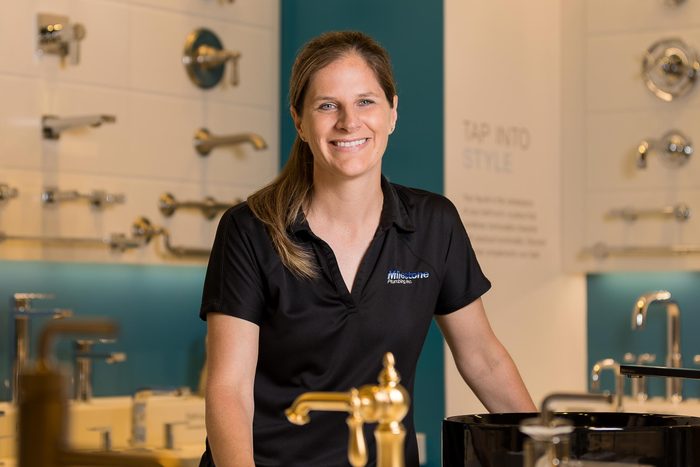Old plumbing can function just fine with some attention and TLC. Pro plumber Jessie Cannizzaro shares tips on care and maintenance.
Best Pro Tips for Old Plumbing Maintenance
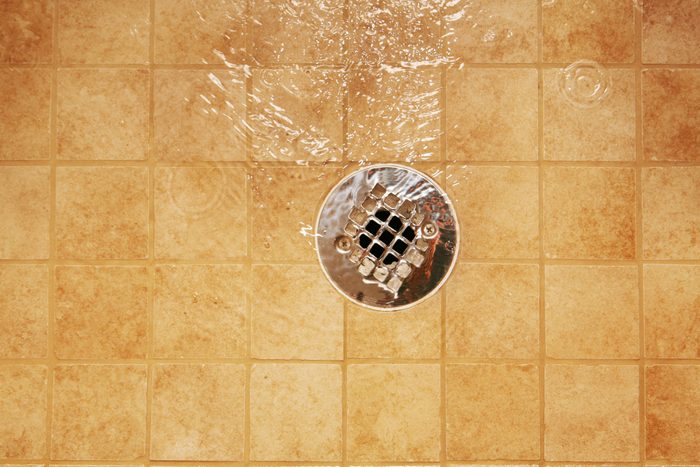
Pay Attention To Plumbing Noises
The problem: If you hear a glugging noise, Cannizzaro says “the drain system is starving for air to regulate the pressures and it’s not able to get it, so it’s pulling air.” This could be a blockage elsewhere in the system, like a beehive in the vent pipe that goes through the roof. But if water isn’t going down the floor drain, it’s sewer related.
The solution: “The only time that it does get better on its own is if it’s not an issue with your home,” Cannizzaro says. If something’s going on with the city sewer, once the issue is corrected, your home should be fine. However, don’t wait to investigate!
To determine if it’s a city problem, Cannizzaro suggests asking your neighbor if they’ve having issues with the floor drain. “You [can also] call the water works or the sewage department and ask them to come out and check the city sewer,” she says.
If it’s not city related, a plumber can troubleshoot the issue.
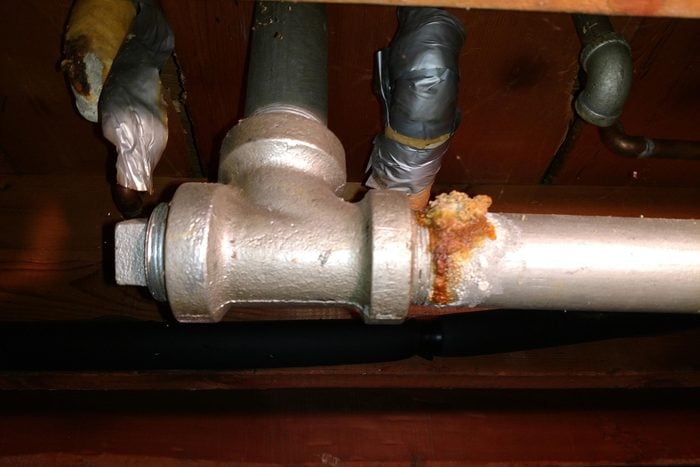
Avoid Chemical Cleaners
The problem: When a toilet clogs or the sink isn’t draining, many people reach for chemical cleaners. But those eat away at the metal pipes common in older homes.
It’s also a temporary fix because whatever is causing the blockage might continue to occur. If you try to dislodge the blockage with a drain cable, it could puncture a hole in the deteriorating pipes and cause an even bigger problem.
The solution: Avoid causing blockages. Even if you have a garbage disposal, pipes in older homes aren’t equipped to handle them. Things like stringy vegetables, coffee grounds, grease and eggshells need to be put in the trash or compost bin.
To break down materials going down the drain, add a drain enzyme like BioClean once a month. If there’s already a blockage, you’ll most likely need to run a drain machine through. If you don’t know what to use, don’t be afraid to call your local plumber for advice!
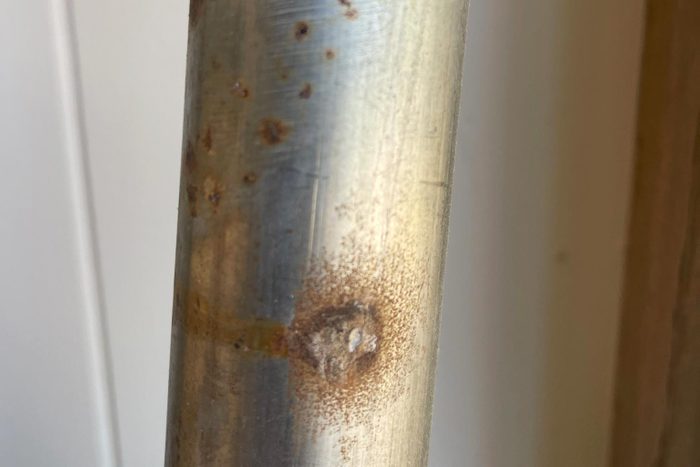
Check for Deteriorating Pipes.
The problem: Water lines run along the ceiling of the basement, and a pinhole leak can be hard to spot on the top side of a pipe. Cannizzaro says she doesn’t worry about the floor when looking for leaks. “I’m with my flashlight and I’m looking … right up at the ceiling to see what’s going on,” she says.
Water evaporates, so there might not be an active wet spot. Instead, she looks for mineral deposits above the pipes. These are signs of a deteriorating pipe that requires immediate attention.
The solution: If you see white or red mineral deposits on the water line, it’s time to get a plumber. Depending on the type of pipe or the damage, they might repair the leak at the fitting or cut it out and replace that section.
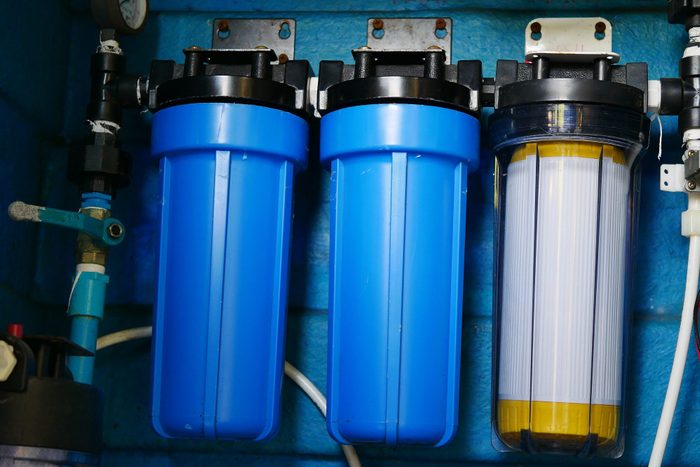
Assume Lead Pipes Are in Your Older Neighborhood
The problem: Lead pipes are tricky in older neighborhoods. Lead doesn’t necessarily have to be in your home to cause issues.
“[If] there’s work being done [in the city water system], let’s say a block away, there could be lead shavings that are getting introduced” to your water, Cannizzaro says. That’s especially troublesome if you have children or someone pregnant in your household.
The solution: Install a reverse osmosis system that filters out lead and other unwanted containments. If you don’t want a complete system, you can buy lead filters for kitchen faucets, and refrigerator filters like Brita that can remove up to 99% of lead. This will ensure your water is at least safe to drink.
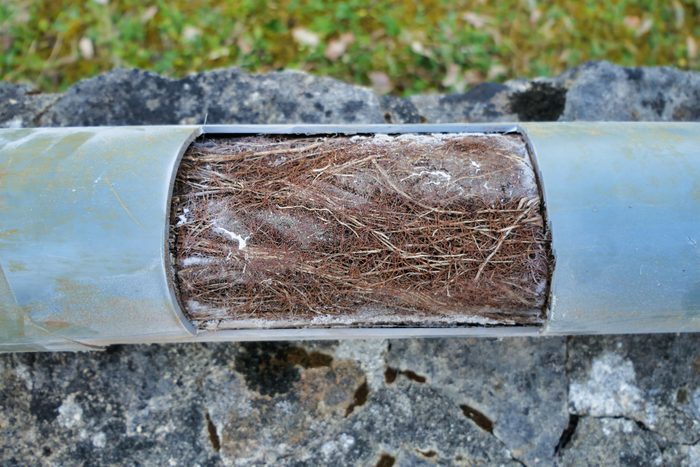
Be Aware of Roots in Sewer Lines
The problem: In many older areas, roots from big, beautiful trees penetrate older clay sewer systems with concrete joints. The roots eventually crack the joints and cause the pipes to shift. Penetrating roots can trap materials like “flushable” wipes and cause dams. The shifting pipes can create bellies that trap waste, leading to sewage pipe collapse.
The solution: If you live in a neighborhood with lush trees lining the street, have your plumber check your sewage system. For some homes, a plumber should come out once a year to do root maintenance. In other areas, it might be every 10 years. Other than that, avoid flushing things down the system that could cause blockages.
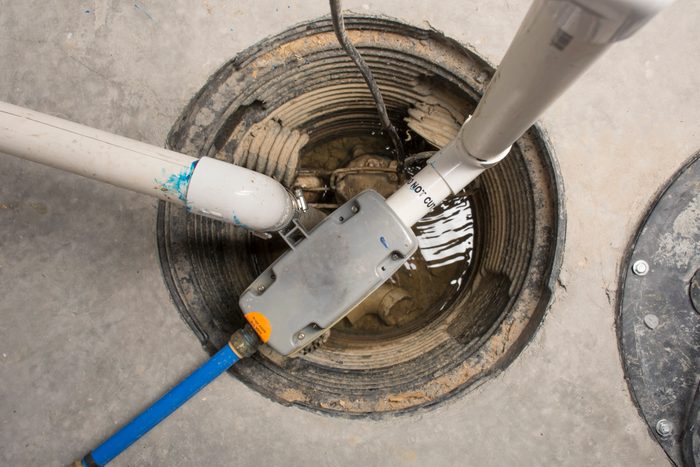
Install Backup and Battery-Powered Sump Pumps
The problem: If you live in an area with a lot of groundwater and you lose power in a storm, it can take time to re-start the sump pump.
The solution: Install a backup sump pump or a battery-powered one that isn’t affected by power outages.
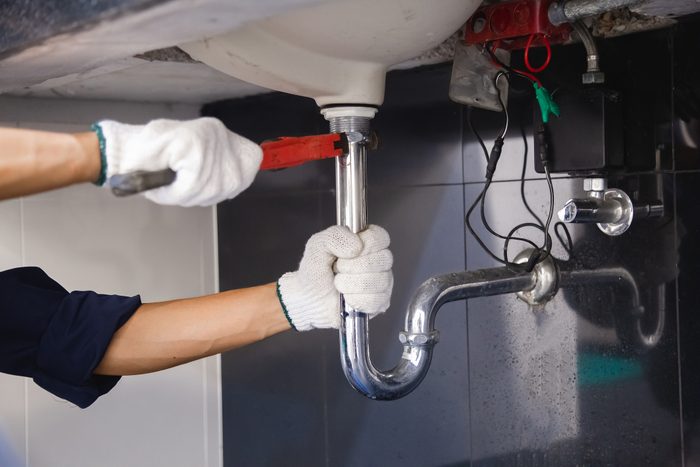
Don’t Skip a Plumbing Inspection
The problem: In today’s real estate market, many prospective home buyers skip home inspections in their offers to make their bids more competitive. Don’t do it. Without an inspection, you won’t know the state of the home’s plumbing. The pipes could be corroded, razor-thin or have small leaks.
The solution: Hire a plumber to inspect the plumbing of any house you want to buy. That will help you better understand the life expectancy of the system and, if you go ahead with the purchase, establish a maintenance plan to head off future problems.

One Last Tip: Use Technology
Having an older home doesn’t mean you can’t utilize technology to your advantage.
Moen recently came out with a Flo Smart Water Monitor, which tracks “water flow, pressure, and temperature” in your home. The monitor senses larger water events and small leaks that could cause mold over time. If the monitor senses something is off, it can send an alert to your smartphone and shut off your water automatically.
Overall, with old plumbing, it’s best to be proactive. Replacing a pipe versus dealing with a major leak or backed-up sewage can be the difference between loving your older home and all its quirks, or feeling overwhelmed by expensive repairs.





















